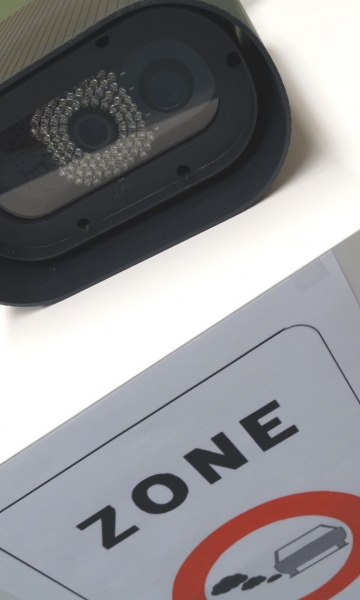New fines are being handed out to motorists in the Brussels region. Speeding? Running a red light? No – it’s because they were driving polluting vehicles, which are banned in the Low Emission Zone, and were found out by a smart-city smart camera.
A new step has been taken in the implementation of the
Low Emission Zone (LEZ) in the Brussels-Capital Region. Since 1 October 2018, drivers whose vehicles no longer meet the required standards are being fined. But how do you catch offenders in the act? With smart-city technology, of course!
ANPR makes cameras smart
The Brussels Region’s Low Emission Zone classifies vehicles according to their polluting emission levels as determined by the EURO standards. Currently, the most polluting diesel vehicles (EURO 0 and EURO 1) are banned. As of 2019, this will also apply to EURO 2 diesel vehicles and EURO 0 and EURO 1 petrol vehicles. The purpose of this move is to protect the Brussels population from a pollution source which, according to the World Health Organisation (WHO), causes
75,000 premature deaths in Europe each year.
The EURO class of a vehicle cannot be determined with the naked eye. It takes video cameras with ANPR smart technology to do so. As its name suggests, ANPR (Automatic Number Plate Recognition) is used to automatically recognise registration plates. The system analyses the image from the video camera and is able to read the characters on the number plate.
1.2 million vehicles a day
184 ANPR cameras have already been deployed by the Brussels Region Informatics Centre (BRIC) throughout the region within the scope of the
regional video protection platform. By the end of 2018, another 40-odd cameras will have been added. At the present time, around 1.2 million vehicles are being filmed by the system each day.
Images and registration-plate numbers are not enough to identify an offender, however. For this to happen, the data must be connected to other data held by the Vehicle Registration Department (DIV) within the Federal Public Service Mobility.
This connection is made via Bruxelles Fiscalité/Brussel Fiscaliteit, the body in charge of identifying offenders, notifying them, and issuing LEZ fines, which has a specific platform for this purpose. The platform accesses the images and processes the data using
regional service integrator Fidus, which in the Brussels Region is used for the exchange of official data between authorised public services.
Warnings before fines
This means that number plate data for all vehicles driven in the LEZ can be connected to the EURO standard and the vehicles’ class. In the event of an offence, they are connected to the vehicle owner’s data and Bruxelles Fiscalité/Brussel Fiscaliteit can automatically issue a notification of the fine incurred in the LEZ.
The system has already proved itself during the spring of 2018. However, warnings were issued rather than fines. Around 3,000 vehicle owners were merely notified until 1 October. It should be noted that as new vehicle categories are banned from the LEZ, their owners will in turn be issued warnings for a period of time. The messages sent include information concerning the clean-transport alternatives supplied by the Brussels Region as well as ways for owners to rid themselves of their polluting vehicles.
What about privacy?
As the processing chain is fully automated, privacy is not infringed in any way. Only Bruxelles Fiscalité/Brussel Fiscaliteit may read the video images of vehicles and the data which identify offenders. The other bodies involved in the processing chain, e.g. the BRIC for the ANPR cameras and the Fidus platform, as well as its partner IRISnet, which circulates the data on its optic-fibre network, are never able to read or interpret the video images. Moreover, the various data-processing operations are authorised by the Data Protection Authority (DPA).
